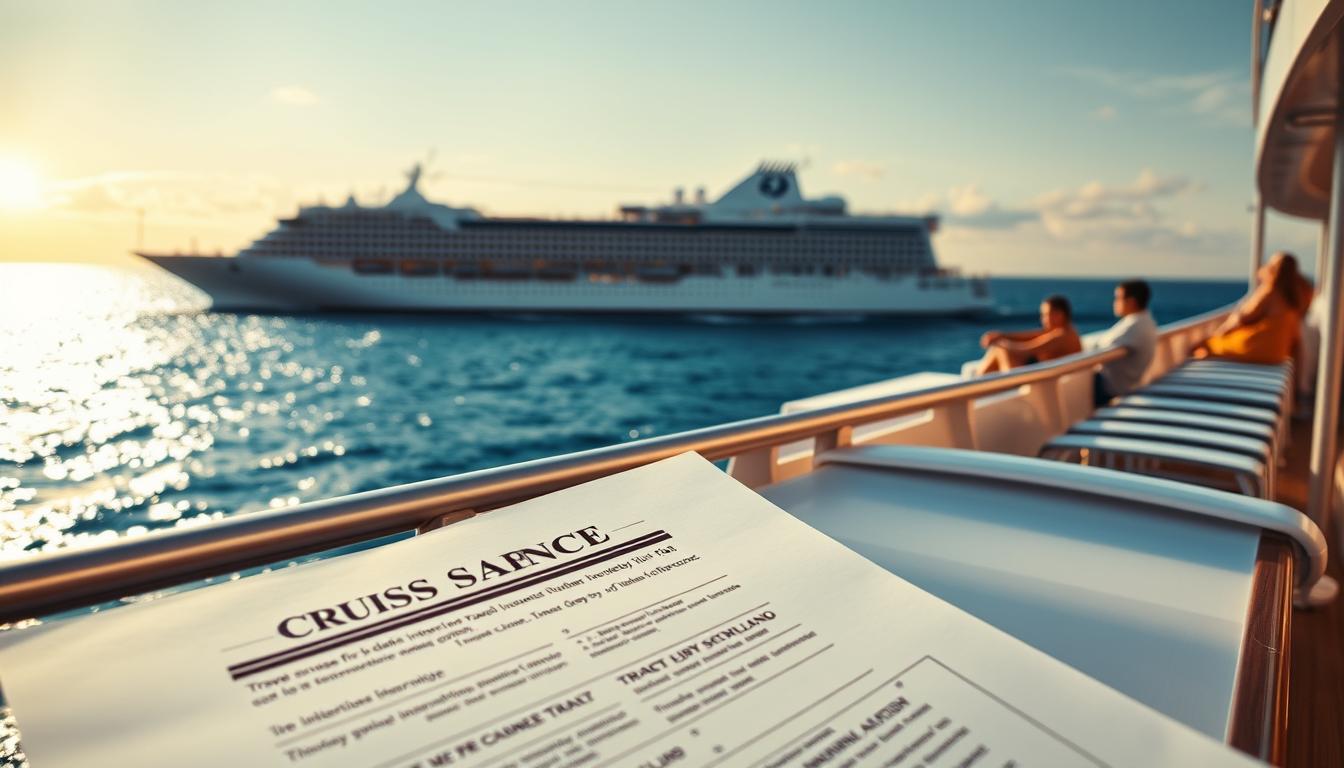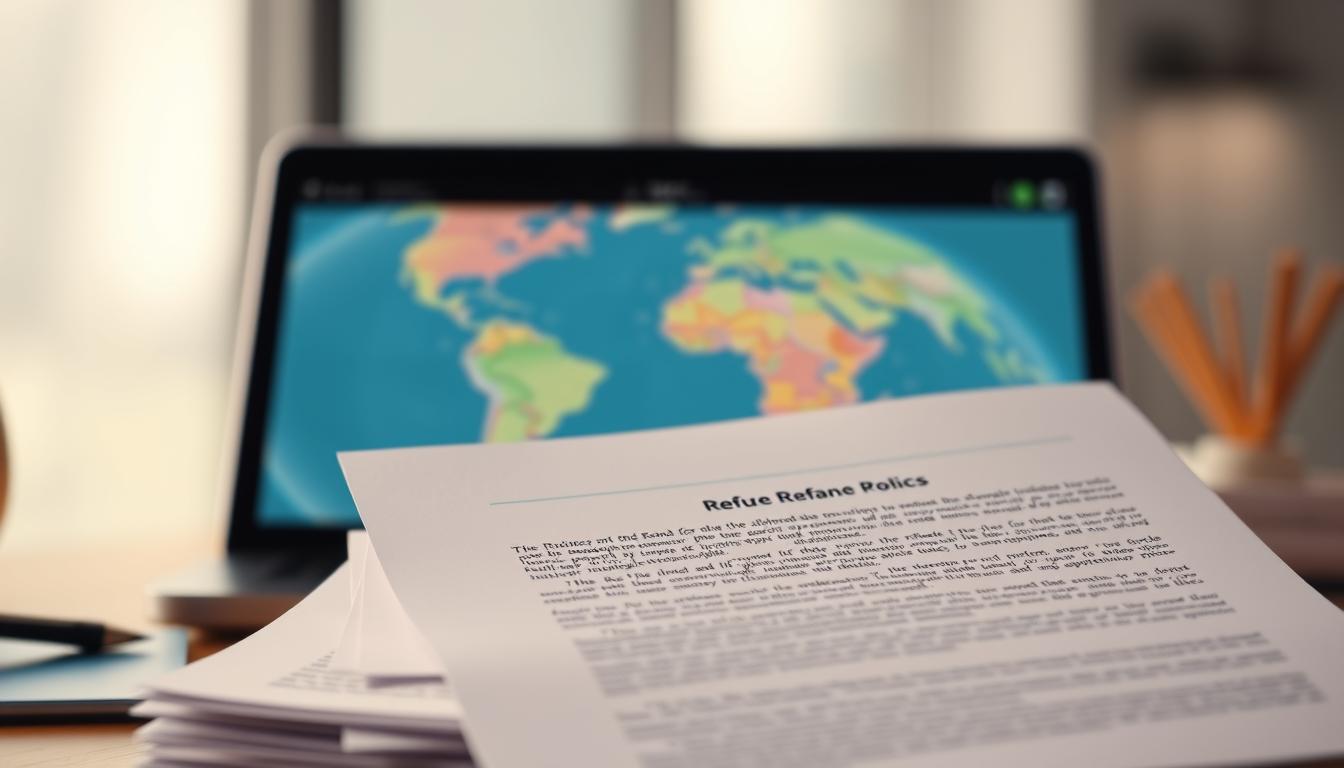Did you know many plans only allow a 10–14 day “free look” to cancel for a full return? That window often decides whether you get your money back. It also ends if you depart or file a claim.
We’ll walk you through the key details so you can act fast and stay confident. You’ll learn how the review period works, why departure and claims status matter, and when an agent or company can make exceptions.
Expect clear examples — like Insured Nomads’ 10‑day review (15 if mailed) and how comparison sites may back a money‑back guarantee. We’ll also explain the difference between trip reimbursements and getting the premium returned.
Bottom line: know the terms before you buy. With the right info, you can protect your plans and keep exploring without guesswork.
Understand the basics: refund timelines, “free look” periods, and eligibility
Start by knowing the narrow window that often decides whether you get your premium back. In the United States most states require a short review period after you receive coverage. That window is your clearest path to a full premium return — if you haven’t left or used benefits.
What the review/free look period means in the United States
Most plans offer 10–14 days from delivery to cancel for a full premium return. Some insurers, such as Insured Nomads, specify 10 days (15 if mailed). Squaremouth and other aggregators align with that mandated span.
Typical timing and why departure and claims status matter
Once you board a flight or begin the trip, eligibility usually ends. If you’ve filed a claim or used benefits, insurers can deny a refund because coverage was already used.
Money-back guarantee vs. grace period
- Both labels point to a narrow days-long window to cancel for a full refund of the premium.
- Outside that window you may still ask for alternatives: date changes, credits, or partial options.
- Set a reminder the day you buy so you can act before departure and preserve your rights.
Your travel insurance refund policy explained
Not every covered loss means you’ll get your premium returned—know the rules that separate claims from refunds.
Think of two tracks: one for claims that pay covered trip losses and another for getting your premium back. You can qualify for a claim without qualifying for a full premium return.
Covered reasons vs. premium refunds: don’t confuse claim eligibility with refundability
Covered reasons—illness with documentation, severe weather, or supplier bankruptcy—unlock trip cancellation coverage for prepaid, nonrefundable costs. That coverage pays losses, not your paid premium.
When a full premium refund is possible and when it isn’t
A full premium refund usually happens only inside the short review window and only if you haven’t departed or filed any claim. After the trip starts or once you file a claim, most plans stop being refundable.
Real-world example: policy becomes nonrefundable after trip start or claims
Insured Nomads and many carriers explicitly end the review period upon departure. If you file a claim, the insurer treats the coverage as used and can refuse a premium return.
- Claims = reimbursement for covered trip costs; not the same as premium return.
- Full premium refunds: only within the review/grace window and before departure or claims.
- If you need flexibility for non‑listed reasons, consider CFAR—covers trip losses but won’t reopen a used premium.
- Keep receipts and quote exact conditions from your contract when you call the company.
| What | When it applies | What it pays | Typical limits |
|---|---|---|---|
| Claim for covered trip loss | After covered event (illness, weather) | Prepaid, nonrefundable trip costs | Subject to documentation and coverage limits |
| Full premium refund | Within review/free‑look and before departure | Returned premium only | Often 10–14 days; ends on departure or claim |
| CFAR (Cancel For Any Reason) | If purchased and rules met | Partial trip reimbursement (not premium) | Usually 50%–75% of nonrefundable costs; higher premium |
When you can actually get your premium back
There are only a few clear paths that lead to getting your premium back. Timing and proof matter most. Act early and keep records to make the process smooth.
Canceling within the free look/grace period before departure
If you cancel within the insurer’s 10–14 days and haven’t left or filed a claim, you generally get a full return. Set a calendar reminder the day you buy the plan so you don’t miss those days.
Trip supplier cancels your cruise or tour and you receive a full trip refund
If your cruise line or tour operator refunds every fee, your coverage often becomes unnecessary. Send that confirmation to the carrier and request cancellation.
No insurable interest: proving you got all deposits back and took no credits
Retail plans require proof that you accepted no credits. Email receipts and refund confirmations show there’s no insurable interest and speed approval.
Edge cases: death of policyholder or travel companion
In tragic events, insurers typically return premiums to next of kin. Ask what death certificates and beneficiary details the company needs.
- Pro tip: Request date changes or supplier credits before the policy is effective; after departure, refunds are rare.
- Example: A cancelled river cruise that issues a full trip refund should be used to request the premium back the same week.
| Situation | What to provide | Likely outcome |
|---|---|---|
| Cancel within free look (before departure) | Cancellation notice within days | Full premium return |
| Supplier cancels and refunds | Supplier refund confirmation | Insurer cancels coverage; premium refunded |
| No insurable interest (receipts show full refund) | Receipts and email records | Retail plans typically refunded |
| Death of policyholder or companion | Death certificate and beneficiary info | Premium returned to next of kin |
Where you bought the policy matters: cruise/tour bundle vs. retail
Where you buy coverage can change whether you can get your premium back. If you bought a bundled plan through a cruise or tour operator, the coverage often follows the supplier’s cancellation schedule and final payment deadlines.

Miss the supplier’s refundable window and both the trip and the bundled plan usually become nonrefundable. Cancel early and recover deposits, and the bundled premium commonly returns too—timing is everything.
Retail plans from third‑party sellers work differently. Insurers typically need proof you received full cash refunds and did not accept credits. That proof shows you lost insurable interest and lets the company cancel the plan.
- Bundled coverage mirrors supplier cancellation and final payment dates.
- Retail plans require receipts and refund confirmations to void insurable interest.
- Accepting credits often keeps insurable interest in place—expect pushback on a premium refund.
| Purchase type | How refunds follow | What to give the company |
|---|---|---|
| Bundled cruise/tour | Tied to supplier dates; closes at final payment | Supplier cancellation confirmation |
| Retail / third‑party | Depends on proof of full cash refunds | Receipts and no‑credit confirmations |
| Best practice | Ask up front how supplier terms interact with coverage | Save every receipt and email |
CFAR coverage for flexibility when plans change
When you want true booking flexibility, CFAR is the upgrade that fills gaps left by regular coverage.
CFAR (Cancel‑For‑Any‑Reason) reimburses a portion of prepaid, nonrefundable trip costs when you cancel for reasons outside standard covered reasons.
Expect partial reimbursement—typically 50%–75% of unreimbursed costs—not a full refund. Refundable charges or accepted vouchers do not qualify.
Timing and rules are strict. Buy CFAR within 10–21 days of your initial trip payment. Insure 100% of nonrefundable trip costs. Cancel at least two days before departure. CFAR is not available in every state or plan.
- Reimbursement: usually 50%–75% of nonrefundable trip costs.
- When to buy: within 10–21 days of initial trip payment.
- Cancel window: at least 2 days before departure.
- Cost: adds roughly 40%–50% to base travel insurance premium.
| Feature | Typical rule | Impact |
|---|---|---|
| Purchase window | 10–21 days from initial trip payment | Must meet deadline to qualify |
| Reimbursement rate | 50%–75% | Partial recovery only |
| Cost uplift | +40%–50% to base premium | Total cost ≈ 6%–12% of trip price |
Providers with CFAR options include Seven Corners, Tin Leg, Travel Guard by AIG, and Trawick International; some AAA admin plans via Allianz may offer it through an agent. Read the terms and state availability before you add CFAR.
How to ask for a refund or more flexibility from your insurance company
Begin by collecting facts: policy number, purchase date, trip dates, supplier confirmations, and any refunds you already received. Call your agent first — agents and comparison sites like Squaremouth often confirm money‑back guarantees and can push for exceptions faster than general customer service.
Leverage your agent: money‑back guarantees, advocacy, and exceptions
Agents can confirm whether you’re inside the free‑look window. They can also press the company when circumstances are compelling — like a supplier cancellation or documented full refunds.
Negotiation tips: escalate, show loss of insurable interest, request credits or date changes
Key steps to follow:
- Start with your agent and state the exact request: cancel, transfer dates, or apply premium to a new trip.
- If denied, escalate politely to a manager — real exceptions were granted during the pandemic when managers reviewed files.
- Lead with “loss of insurable interest” if you got full cash refunds and took no credits; attach supplier emails and receipts.
- Ask about flexibility: date changes, moving coverage to a new trip (Allianz Partners USA sometimes allows this up to two years), or applying the premium as a credit.
- Consider CFAR coverage next time for broad cancel reasons — it buys flexibility at a higher cost.
| Action | What to show | Likely outcome |
|---|---|---|
| Agent call | Policy number, purchase date | Confirm money‑back window or next steps |
| Escalate to manager | Detailed evidence, timeline | Possible goodwill exception or faster decision |
| Loss of insurable interest | Supplier refund emails, receipts | Premium cancellation more likely |
Keep communications clear, polite, and persistent. A collaborative tone helps your agent and the company become allies in getting the outcome you need.
No refund? Options to preserve value
If a full premium return isn’t available, there are practical ways to keep the value of your coverage.
Act quickly. Many companies let you change dates or move coverage to a new trip if you do it before the policy’s effective date.
Change dates or transfer coverage before the effective date
Ask to update your travel dates as soon as a supplier shifts your itinerary. Some insurers, including Allianz Partners USA, allow transfers up to two years ahead.
Accept credits or policy modifications when suppliers shift your itinerary
If your airline rebooks a flight or a cruise moves sailings, request matching adjustments to your plan so you stay protected without buying new coverage.
- Move dates early: Changes are easiest before the effective date.
- Take credits carefully: Confirm expiry and whether credits lock you into the same company.
- Document everything: Save supplier emails and receipts for each change.
- Group trips: Coordinate updates for everyone so the insurer processes one clean change.
- CFAR note: If you had CFAR, you might have kept more value — consider it for future bookings.
| Option | When to act | Effect |
|---|---|---|
| Change dates / transfer coverage | Before policy effective date | Moves protection to new trip; avoids buying new plan |
| Accept supplier credit | After supplier cancellation or rebook | Retains value; check expiry and transfer rules |
| Group coordination | As soon as itinerary changes | Cleaner insurer processing and consistent coverage |
| Escalate to company rep | If standard changes denied | Possible manager exception or credit application |
Conclusion
Think of the days after you buy as a decision window — act while options remain open.
Use the 10–14 day free look to decide if the plan fits your needs. If you cancel before departure and show you took no credits, retail carriers often return the premium.
Consider CFAR if you want wider options. Buy it soon after booking, cancel at least two days before your flight, and expect 50%–75% of nonrefundable trip costs back while paying roughly 40%–50% more in price.
Keep receipts, supplier emails, and exact terms. Call your agent early — a quick call can turn confusion into a clear plan so you travel with confidence.


